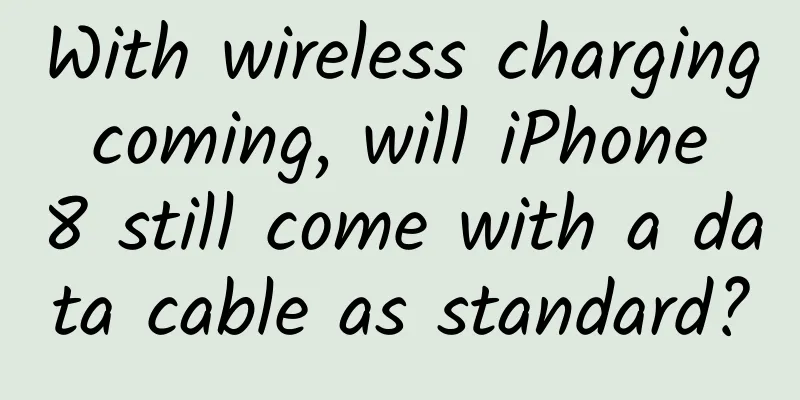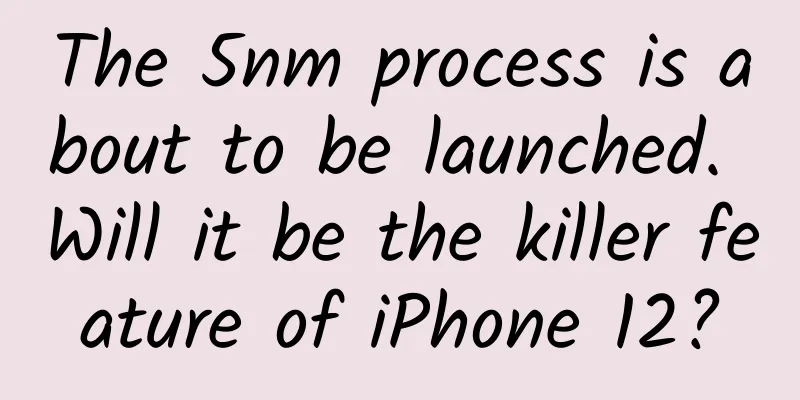With wireless charging coming, will iPhone 8 still come with a data cable as standard?

|
Recently, it has been widely rumored that Apple will use wireless charging technology in the next generation of iPhone. According to a report previously submitted by well-known analyst Guo Mingchi, the three new iPhones launched by Apple this year will all adopt a glass body design and support wireless charging. However, since the glass case and wireless charging are not conducive to the heat dissipation of the mobile phone, a graphite sheet that is conducive to heat dissipation will be added to the 3D Touch module of the next generation of iPhone to avoid the problem of overheating of the 3D Touch module and failure to operate normally. In addition, Apple joined the WPC Wireless Charging Alliance earlier this month. Although Apple is usually cautious in adopting new technologies, they will improve a technology based on other attempts and then use it in its products, but Apple has another habit - changing user behavior habits through interfaces. Rob Rueckert, executive director of Sorenson Capital, believes that this means that Apple may completely abandon the use of wired charging function on the next generation of iPhone . "Apple is forcing users to get used to a different model through AirPods. If you buy an iPhone 8 or any iPhone version that Apple may launch in the future, will Apple only allow you to use wireless charging?" At present, the WPC version of wireless charging still requires the mobile device to be in direct contact with the charging pad to charge, and it is clear that Apple does not want wireless charging like this. The problem with a device that supports both wireless charging and wired charging is that there is no difference between the two. If a device still needs a charging pad to charge, why should users spend money to buy this charging pad? Just use wired charging directly. What users want is true wireless charging. In addition, wireless electromagnetic induction charging requires a component in the mobile device - a copper wire receiving coil, which will take up a lot of space inside the body, making the already crowded space even more crowded. Rueckert believes that if Apple launches wireless charging on the next generation of iPhone, it may be a very thorough wireless charging function . "Apple has done this before," Rueckert said. "They've always been bold in changing features, and because consumers are so loyal to the Apple brand, many people will welcome these changes. I don't expect that." In general, there are three different types of wireless charging technology in the industry: charging pads that use magnetic induction or resonance technology, which is currently used by Samsung wireless charging devices; charging bowls/surface charging that also uses magnetic resonance charging technology, which can charge devices from a few centimeters away; and wireless charging like Wi-Fi, which is truly wireless charging and can charge devices within a certain range, so users can walk around the room with the charging device. Wireless charging systems from companies such as Energous and Ossia also use Wi-Fi-like charging technology, but the new Dell/WiTricity tablet system at CES uses the AirFuel Resonant standard, which supports charging bowls and charging through surfaces. "In terms of the progress and industry awareness that has been made, charging pads have been shipped in large quantities since 2015, charging bowls/charging through surfaces have only been available this year, and if you want to be able to charge in any corner of the room, it will take at least another year to achieve the goal of commercial mass production." That means that there will be no “devices that charge at full speed across the room” on the market in 2017. Even if Apple chooses magnetic resonance wireless charging technology for the iPhone, it will only be a small step forward and will be far from Wi-Fi-like long-distance charging. Ossia and Energous have previously demonstrated their wireless charging technologies that can charge devices from a distance of 15 feet. “I’ve used both of their technologies, and they’re pretty good,” Ruekert said. Energous’ WattUp and Ossia’s Cota mobile device charging systems work like wireless routers, sending radio frequency signals to wearable devices and mobile phones. Wireless charging receivers mainly include radio frequency antennas in the form of PCB boards, ASICs, and software. Another benefit of using radio frequency to charge mobile devices is that you can get rid of the magnetic induction charging coil, which is no longer needed. The Wi-Fi receiver chip in the mobile device can receive wireless signals for both communication and charging with just a slight change. Ruekert believes that no matter which wireless charging method Apple chooses, if Apple supports this feature this year, then they may add something exclusive to it. Apple has been awarded several wireless charging patents over the past decade. In 2005, Apple had a patent describing an iPod charging and data transfer via zero-contact induction. In 2012, Apple was awarded a patent describing near-field magnetic resonance charging technology. Apple said in the patent document that the technology can be used to wirelessly charge multiple appropriately configured devices. Apple pointed out that the wireless charging distance is about 1 meter, which means that desktop devices like iMacs can also charge peripherals such as wireless mice. Currently, as mobile technology suppliers develop wireless charging technology, this technology has a very rapid development momentum. In 2016, the shipment of wireless charging devices was about 200 million units, and most of them still used inductive (charging pad) wireless charging designs. "If it were other manufacturers, you could think of them starting to use inductive charging pad technology as a start. For Apple, I think it is their exploration of various wireless charging technologies for the overall user experience." As a winner of Toutiao's Qingyun Plan and Baijiahao's Bai+ Plan, the 2019 Baidu Digital Author of the Year, the Baijiahao's Most Popular Author in the Technology Field, the 2019 Sogou Technology and Culture Author, and the 2021 Baijiahao Quarterly Influential Creator, he has won many awards, including the 2013 Sohu Best Industry Media Person, the 2015 China New Media Entrepreneurship Competition Beijing Third Place, the 2015 Guangmang Experience Award, the 2015 China New Media Entrepreneurship Competition Finals Third Place, and the 2018 Baidu Dynamic Annual Powerful Celebrity. |
<<: Apple MacBook Pro has a new problem: the keyboard doesn't work
>>: iPhone 8's revolutionary front camera exposed: supports 3D perception
Recommend
Is the habit of “rinsing mouth with tea” in “Dream of Red Mansions” good or bad?
□ Tong Yun Cao Xueqin wrote in Dream of the Red C...
Key event distribution logic, Android key event generation and processing analysis
"Event generation": When the user press...
Stifel Investment Bank: Tesla's target price will be lowered by 4% to $455 in April 2025, and Q1 delivery volume is expected to drop by 23% to 353,418 vehicles
Recently, many investment banks have lowered thei...
10 Mistakes Every Programmer Makes
[[131972]] The 10 mistakes listed in this article...
Practical Investment Course - Investment Banking Yue Nu Jian Baidu Cloud Download
Practical Investment Course--Introduction to Inve...
A woman fell into a coma after taking her medicine in pieces! Never take these five types of medicine in pieces, otherwise...
Recently, a piece of news like this appeared onli...
Is it a pitfall for brands to build private communities?
In 2020, the emergence of cases such as Perfect D...
Foreign practical information! 6 methods to help you design an excellent APP
Many people are full of praise for Parable's ...
5 tips for Facebook advertisers to increase ROI!
There is no doubt that Facebook has a lot to offe...
How to design new product invitation activities to promote products themselves (Part 1)
This article is a summary of the results of a use...
[Daiyu Finance] Pantaoyuan Swallow Returns Strategy Swallow Style Strategy Third Style Returning Slowly on the Road
[Daiyu Finance] Pantaoyuan Swallow Returning Stra...
In-depth analysis of why Android apps are of low quality and crash
Unlike the situation a few years ago when iOS was...
Now, it’s time to go high-end! The road to another breakthrough for domestic mobile phones
Just after the Spring Festival, Xiaomi mentioned ...
How to write a valuable competitive product analysis report?
Before writing a competitive product analysis rep...
What kind of shrimp do you like best?
Cat Killing Warning Please bring your own wifi an...








![Wild Milk Jelly iPad Illustration Class 2020 [HD Quality]](/upload/images/67cc2cf0797cc.webp)
